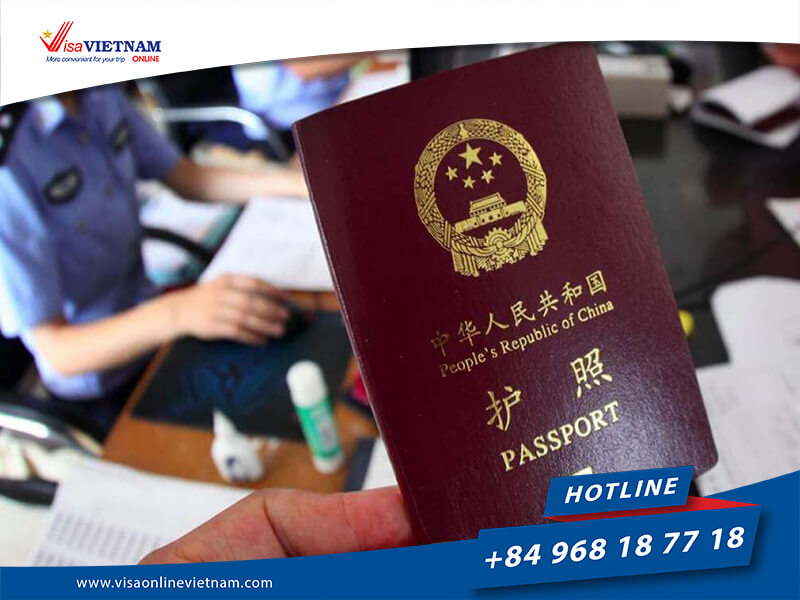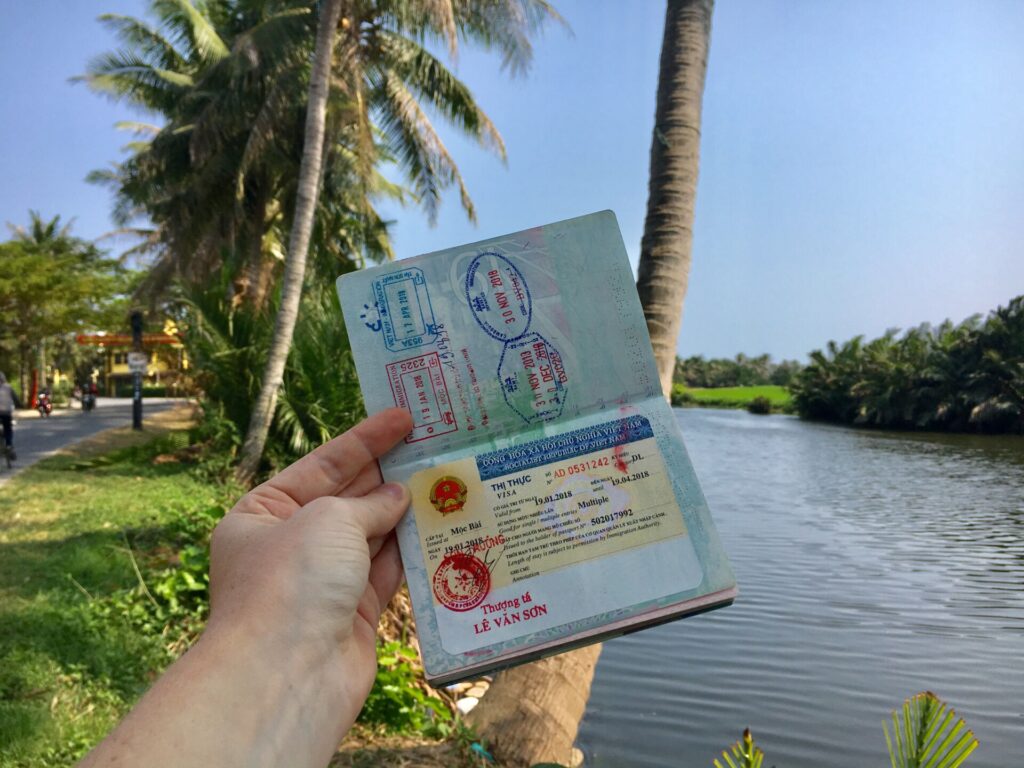Planning a trip to Vietnam is an exciting endeavor, filled with the promise of stunning landscapes, rich history, and vibrant culture. However, before you can immerse yourself in the beauty of Halong Bay or sample the delights of Vietnamese street food, you need to navigate the sometimes complex process of obtaining a visa. Understanding Visa to Vietnam: What Documents Do You Need? is crucial for a smooth and stress-free journey.
Vietnam Visa Requirements: A Complete Guide

Before diving into the specifics of the documents required for a Vietnam visa, it’s essential to understand the broader context of visa requirements. Vietnam has implemented a variety of visa policies to cater to different types of travelers, from tourists to business professionals. The type of visa you need depends on your nationality, the purpose of your visit, and how long you plan to stay.
Determining Your Eligibility for a Visa Exemption
The first step in understanding your visa requirements is to check if you’re eligible for a visa exemption. Vietnam offers visa-free entry to citizens of certain countries for short periods, usually ranging from 14 to 45 days. This exemption is typically available for tourism, business, or transit purposes. Citizens of ASEAN countries, certain European nations, and a few other countries may enjoy this privilege.
To determine your eligibility, you should check the latest visa exemption agreements between Vietnam and your country. Factors such as the validity of your passport, your intended length of stay, and your travel plans (including having a return or onward ticket) are also considered. Even if you’re eligible for a visa exemption, ensure your passport is valid for at least six months beyond your planned departure date from Vietnam.
If you’re not eligible for a visa exemption, you’ll need to apply for a visa. The type of visa required depends on the purpose of your visit. For instance, tourist visas are suitable for leisure travel, while business visas are necessary for professional engagements.
Choosing the Right Type of Visa for Your Needs
Selecting the appropriate visa type is crucial. Vietnam offers various visa categories, including tourist (DL), business (DN), student (DH), work (LD), and investment (DT) visas, among others. Each category has its specific requirements and validity periods. For example, a tourist visa is generally valid for up to 30 or 90 days and can be single or multiple entry.
Understanding the nuances of each visa type is vital. For instance, if you’re traveling for business, you’ll need a business visa, which often requires a letter of sponsorship from a Vietnamese company. Student visas necessitate an acceptance letter from a Vietnamese educational institution.
Preparing for Your Visa Application
Once you’ve determined the correct visa type for your needs, the next step is to prepare your application. This involves gathering the necessary documents, filling out the application form accurately, and submitting your application through the appropriate channels. The specific documents required can vary based on your nationality and the type of visa you’re applying for.
Essential Documents for Your Vietnam Visa Application

The foundation of a successful visa application lies in submitting the correct and complete documentation. While requirements can vary, there are some essential documents that most applicants will need to provide.
Valid Passport: The First Requirement
A valid passport is the most critical document for any visa application. Your passport must be valid for at least six months beyond your intended date of entry into Vietnam. This requirement is non-negotiable, and failure to comply can result in your visa application being denied.
In addition to validity, ensure your passport has sufficient blank pages for visa stamps. Typically, two blank pages are required. If your passport is about to expire or is full, it’s advisable to renew it before applying for a visa.
Passport-Sized Photographs: Meeting the Specifications
Most visa applications require recent passport-sized photographs. These photos should be taken against a white background, be of high quality, and meet specific size requirements (usually 4×6 cm). The photographs should be recent, taken within the last six months, and depict you with a neutral expression.
The quality and specifications of the photographs are crucial. Poor-quality photos can lead to delays or rejection of your application. It’s worth taking the time to ensure your photos meet the required standards.
Gathering Supporting Documents Based on Visa Type
Depending on the type of visa you’re applying for, you may need to provide additional supporting documents. For instance, business visa applicants may need to submit a letter of invitation from a Vietnamese company, while students will need to provide an acceptance letter from their educational institution. Understanding these specific requirements is key to a successful application.
Passport and Photo Requirements for a Vietnam Visa

The passport and photographs are among the most critical components of your visa application. Ensuring they meet the specified requirements is essential.
Understanding Passport Validity and Blank Page Requirements
As mentioned, your passport must be valid for at least six months beyond your planned entry date into Vietnam. This is a universal requirement for visa applications and is strictly enforced.
In addition to validity, the condition and number of blank pages in your passport are also important. Vietnam requires at least two blank pages for visa and entry/exit stamps. If your passport is nearly full or lacks sufficient blank pages, consider renewing it before applying.
The Importance of High-Quality Passport Photos
The quality of your passport photos can significantly impact your visa application. Photos that are poorly lit, incorrectly sized, or not recent can lead to application delays or rejections.
To avoid issues, ensure your photos are taken recently, against a plain white background, and are of high quality. You should be facing forward with a neutral expression, and your face should be clearly visible.
Tips for Taking the Perfect Passport Photo
Taking a suitable passport photo can be more challenging than it seems. It’s worth considering professional services if you’re unsure. Professionals understand the lighting, background, and composition requirements, ensuring your photos meet the necessary standards.
Vietnam Visa Application Form: A Step-by-Step Walkthrough
The visa application form is a crucial document that requires careful attention to detail. Filling it out accurately and completely is essential for a successful application.
Obtaining the Correct Application Form
The first step is to obtain the correct visa application form. This can usually be downloaded from the website of the Vietnamese embassy or consulate in your country. Some countries may also offer online application processes.
It’s crucial to use the most current version of the form. Using an outdated form can lead to delays or rejection of your application.
Completing the Application Form Accurately
When filling out the application form, accuracy is paramount. Ensure all information is correct, including your personal details, travel itinerary, and the purpose of your visit. Any inaccuracies or omissions can lead to your application being delayed or rejected.
Take your time to fill out the form carefully. If you’re unsure about any section, it’s better to seek clarification than to risk making a mistake.
Submitting Your Application Form
Once completed, review your application form carefully before submission. Ensure all required fields are filled out, and the information is consistent with your other application documents.
Proof of Travel: Flight and Accommodation for Your Vietnam Visa
For many visa applications, proof of travel arrangements is required. This typically includes flight itineraries and hotel bookings.
Understanding the Requirement for Proof of Travel
The purpose of requiring proof of travel is for the Vietnamese authorities to understand your travel plans and ensure you have arrangements in place for your stay. This can be in the form of a confirmed flight itinerary and hotel reservation.
Not all visa applications require proof of travel, but it’s common for tourist visas. Business visas might require different documentation, such as a letter from your employer or a conference invitation.
How to Provide Proof of Travel
To provide proof of travel, you can book your flights and hotels and obtain confirmation documents. Be aware that some visa application processes allow for “booking” rather than “confirmed” travel arrangements, which can be more flexible.
When providing proof of travel, ensure the documents clearly show your entry and exit dates from Vietnam, as well as your accommodation details.
Tips for Booking Travel Arrangements for Visa Purposes
When booking travel for visa purposes, it’s advisable to use services that offer flexible cancellation policies. Until your visa is approved, your travel plans aren’t confirmed, and having flexibility can save you money if your plans change.
Vietnam Visa Supporting Documents: What Else Do You Need?
Beyond the basic documents like your passport and photographs, additional supporting documents may be required based on the type of visa you’re applying for.
Letters of Invitation or Sponsorship
For business visas, a letter of invitation from a Vietnamese company is often required. This letter should detail the purpose of your visit, your itinerary, and the company’s information.
For other types of visas, such as work or student visas, sponsorship or acceptance letters from relevant Vietnamese organizations or institutions are necessary.
Financial Documents and Proof of Funds
Some visa applications may require proof of sufficient funds to support your stay in Vietnam. This can be in the form of bank statements or proof of income.
The requirement for financial documents varies depending on the visa type and your nationality. It’s essential to check with the relevant Vietnamese embassy or consulate for specific requirements.

Other Supporting Documents
Depending on your circumstances, other documents might be required. For instance, if you’re visiting family or friends, you might need to provide their contact information and possibly an invitation letter.
Understanding Vietnam Visa Validity and Entry Requirements
Once your visa is approved, it’s essential to understand its validity and the conditions attached to it, including entry requirements.
Types of Visas and Their Validity Periods
The validity period of your visa depends on the type of visa issued. Tourist visas can be valid for a single entry or multiple entries over a specified period, typically up to 30 or 90 days.
Business and other types of visas have varying validity periods based on the specific requirements of your visit.
Understanding Single and Multiple Entry Visas
Single-entry visas allow you to enter Vietnam once during the visa’s validity period. If you leave Vietnam, you’ll need a new visa to re-enter, unless you have a multiple-entry visa.
Multiple-entry visas offer more flexibility, allowing multiple entries and exits within the visa’s validity period. This is particularly useful for business travelers or those planning to visit neighboring countries.
Compliance with Visa Conditions
To avoid any issues during your stay in Vietnam, it’s crucial to comply with the conditions of your visa. This includes adhering to the stated purpose of your visit and not overstaying your visa.
Common Mistakes to Avoid When Applying for a Vietnam Visa
The visa application process can be complex, and mistakes can lead to delays or rejections.
Inaccurate or Incomplete Application Forms
One of the most common mistakes is submitting an application form with inaccuracies or omissions. Ensure all information is correct and complete.
Insufficient or Incorrect Documentation
Providing insufficient or incorrect documentation is another common error. Double-check that you have all required documents and that they meet the specified criteria.
Not Checking Visa Requirements Carefully
Visa requirements can vary significantly based on your nationality and the type of visa you’re applying for. Failing to check these requirements carefully can lead to unnecessary complications.
Conclusion
Obtaining a Vietnam visa requires careful planning and attention to detail. By understanding the Visa to Vietnam: What Documents Do You Need?, you can ensure a smooth application process. From determining your eligibility for a visa exemption to gathering the necessary documents and avoiding common mistakes, each step is crucial for a successful application. With the right preparation, you can look forward to enjoying all that Vietnam has to offer, from its rich history and culture to its stunning landscapes and vibrant cities.



